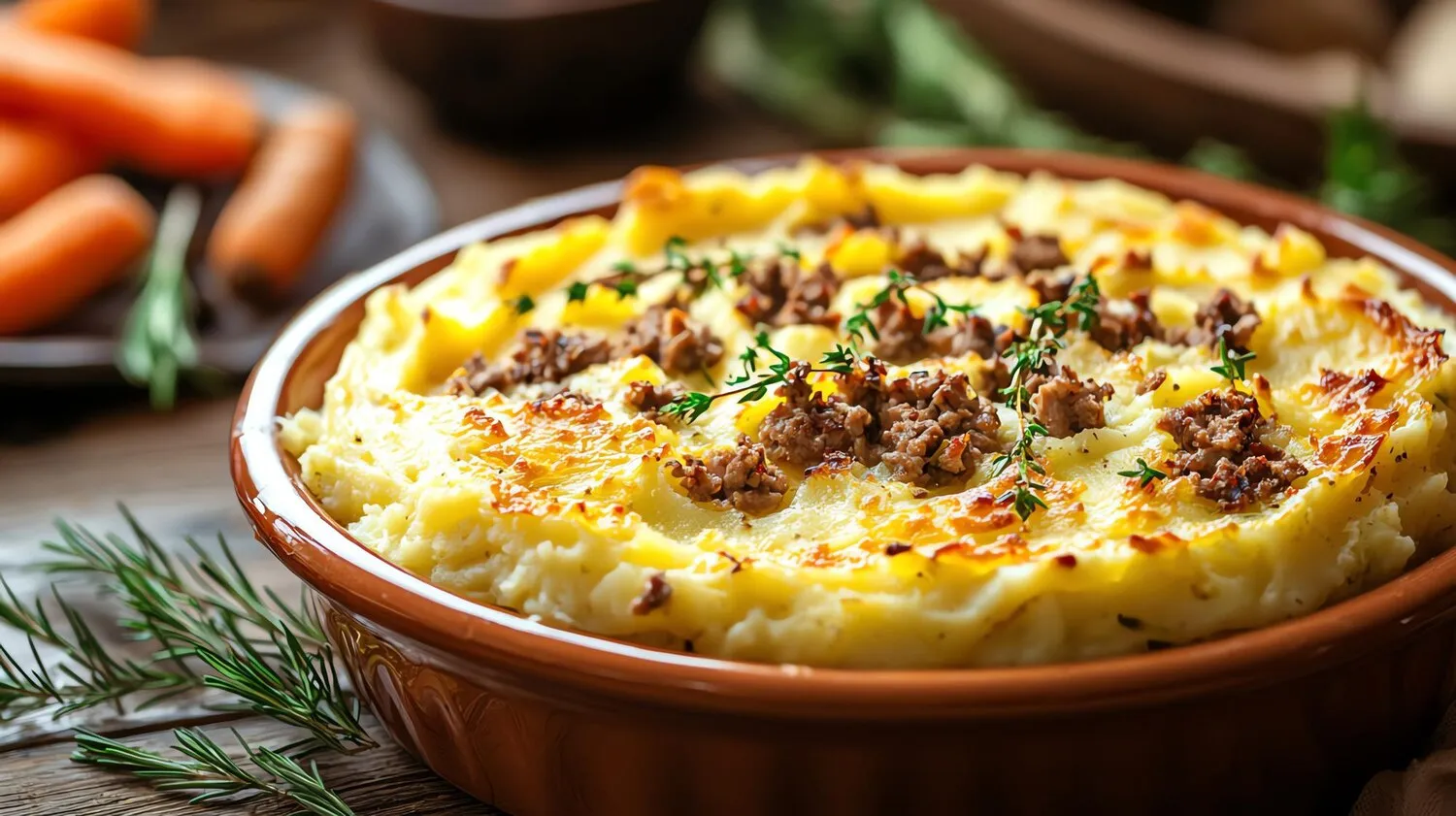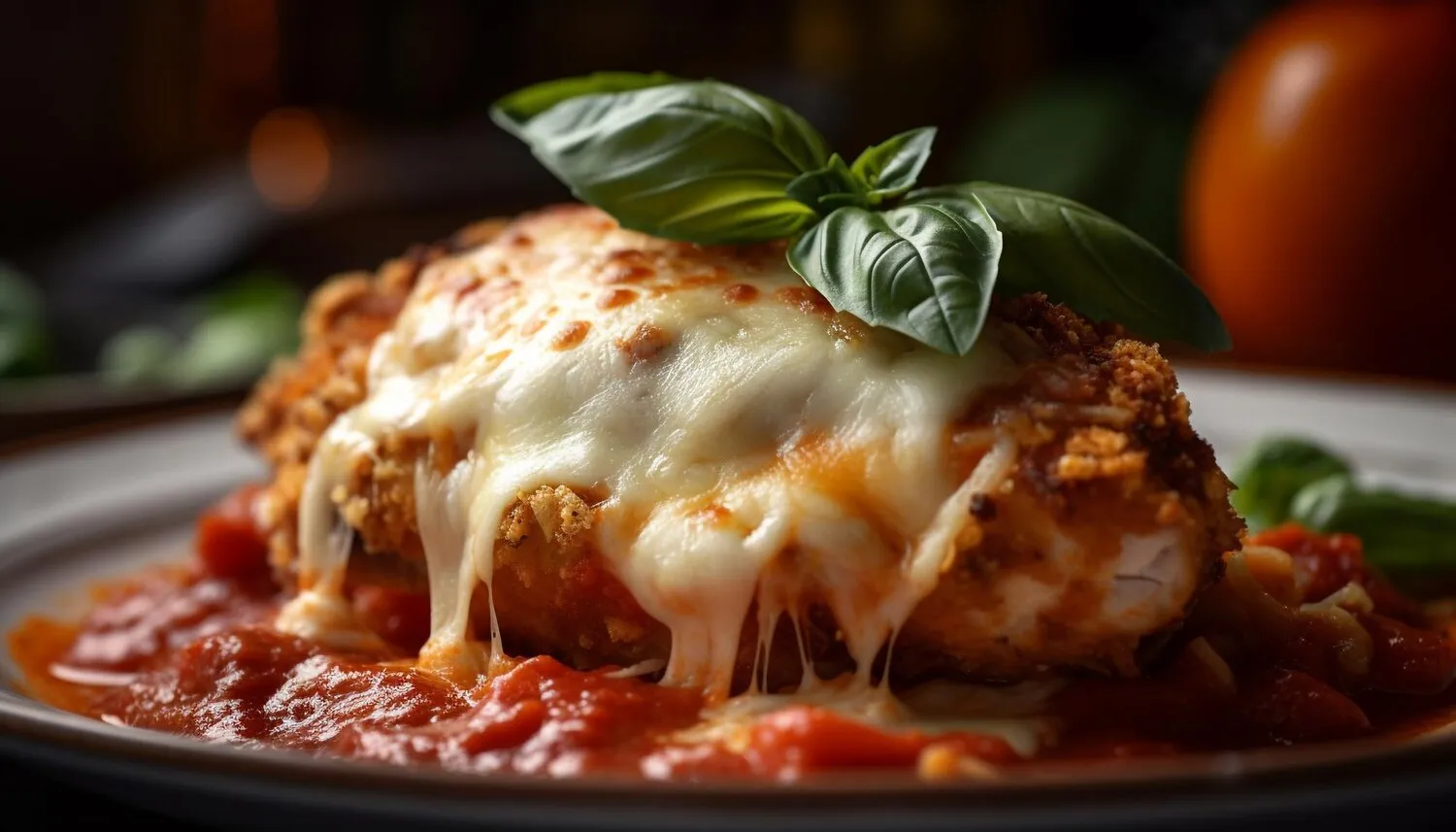
Escondidinho de Carne Seca
Mandioca cream, sun-dried meat, and gratin cheese.
Nutrition Facts
* The % Daily Value (DV) tells you how much a nutrient in a serving of food contributes to a daily diet. 2,000 calories a day is used for general nutrition advice.
Escondidinho's history is rooted in resourcefulness and adaptation. The inland sertão region of Brazil, known for its arid climate, influenced the dish's creation. Ingredients like sun-dried meat were vital for preservation. The use of Mandioca (cassava), a staple indigenous ingredient, is a testament to Brazilian culinary heritage. The 'hiding' (escondido) of the meat under a creamy layer points to a humble origin, perhaps a way to make limited meat resources go further.
Escondidinho is more than just a dish; it's a symbol of Brazilian culinary ingenuity and regional pride, often associated with comfort food and family gatherings. It represents a way of life adapted to the harsh conditions of the sertão, highlighting the importance of resourcefulness and culinary traditions.
Regional Variations
While the core components remain consistent, regional variations exist. Some recipes incorporate different types of cheese for the gratin, such as Queijo Coalho or Queijo Minas. Different herbs and spices may be used to season the carne seca, reflecting local preferences.
Celebratory Dish
Escondidinho is frequently served during special occasions, family gatherings, and informal get-togethers. Its comforting nature and ease of sharing make it a popular choice for communal meals.
Modern Adaptations
While traditional recipes are cherished, modern chefs are exploring variations, such as using different types of meat (shrimp, chicken, vegetables), or incorporating gourmet cheeses and flavorful sauces. These adaptations aim to elevate the dish while preserving its essential character.
The dish presents a rich tapestry of textures and tastes. Savory, creamy, and slightly salty notes dominate, with a pleasant contrast between the soft mandioca cream and the shredded, intensely flavored sun-dried meat. The gratin cheese adds a sharp, nutty element.
The main components – sun-dried beef, mandioca cream, and cheese – each contribute unique profiles. Carne seca (sun-dried beef) is heavily salted and dried, resulting in a concentrated umami flavor. The mandioca cream offers a mild, slightly sweet counterpoint to the saltiness of the meat. The gratin cheese introduces a sharp, savory, and sometimes nutty or tangy layer that amplifies the overall richness.
Soaking the Carne Seca
Properly desalting the carne seca is crucial. Soak it in several changes of water for at least 24 hours, or even longer, to remove excess salt. Taste it after each soaking to gauge the salt level.
Mandioca Cream Consistency
The mandioca cream should be smooth and creamy, but not too thin. Adjust the amount of milk or cream used to achieve the desired consistency. A touch of nutmeg or garlic can enhance the flavor.
Gratin Cheese Choice
Select a cheese that melts well and has a good flavor profile. Queijo Coalho is a traditional choice, but Gruyere, Parmesan, or a blend of cheeses can also be used.
Layering Technique
Layer the ingredients carefully to ensure even distribution. Start with a layer of carne seca, followed by a generous layer of mandioca cream, and finish with a thick layer of cheese. Repeat layers if desired.
Explore additional Brazilian comfort food dishes and restaurants
Explore Brazilian comfort foodDiscover top dining spots and culinary experiences in Osasco.
Explore OsascoLearn more about the food culture, restaurant scene, and culinary heritage of Brazil.
Explore Brazil